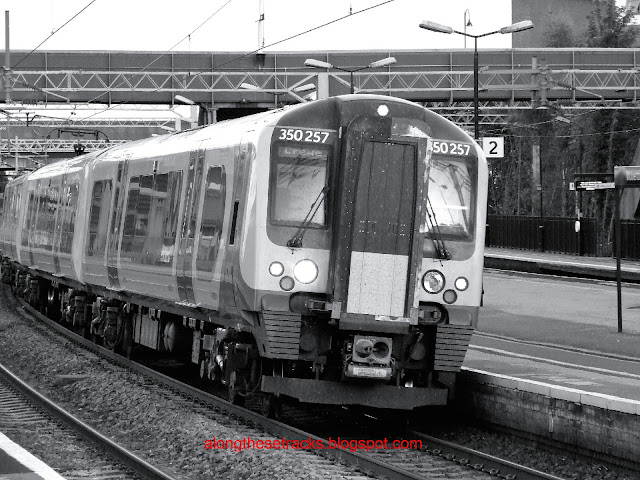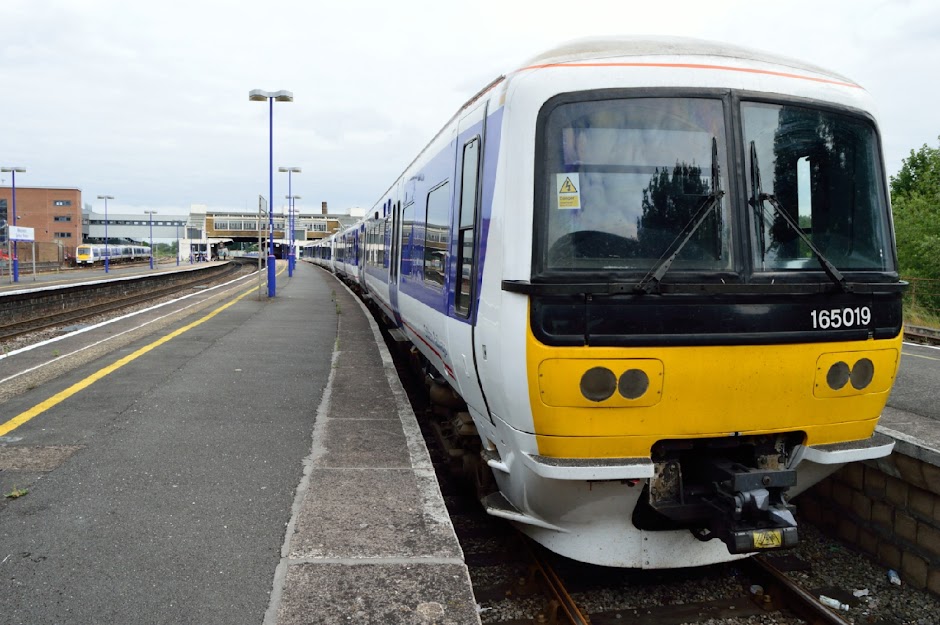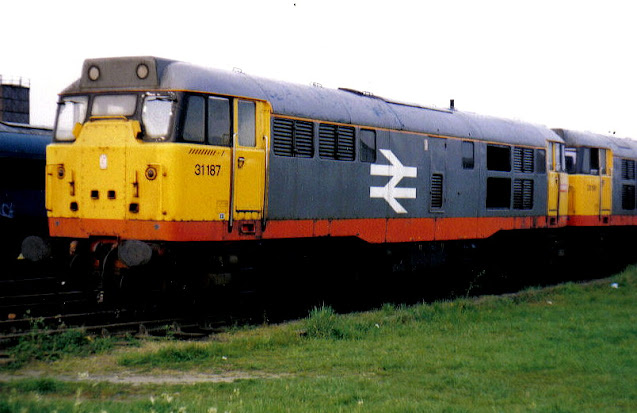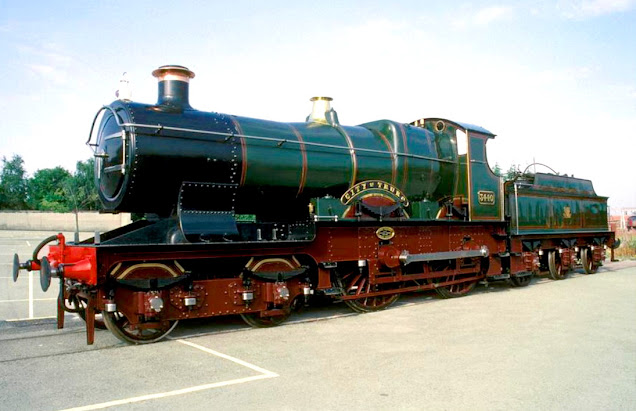 |
| Class 350257 EMU flashes through Wolverton Photo: Charles Moorhen |
A lucky photo of London Midland Trains Class 350257 Desiro EMU passing at speed through Wolverton station, UK.
It had been a busy afternoon at Wolverton, grabbing photos of trains on this particular day. A variety of Class 390 Pendolino EMU's had belted through the station on the far track, too quick for me to even attempt a shot, a regular supply of London Midland Train Class 350 EMUs had kept my shutter finger busy and a small amount of freight had passed by.
And it was due to a passing freight train that I nearly missed the above image.
I had just managed a grab-shot (the story of my life!) of a couple of Class 90 diesel locomotives double-heading through the station, when flicker of movement at the corner of my eye caused me to look to my left.
The last wagon of the freight train was about to pass under the bridge at what I refer to as the London end of the platform, when a profusion of green, black and white burst forth from under the road bridge.
Oh dear! Panic panic! I wasn't ready. My camera was still in its 'view images' setting.
Fumbling, I switched the camera controls to the 'camera icon' and raised it to my eye so fast I thought I might blind myself in the process. I had no time to check the camera settings. All I could hope for was that the settings that were in place to take the photo of the Class 90s would work for this shot.
The shutter clicked, Class 350257 flashed past at speed heading for Crewe, and it was all over. Did it work? I was not very optimistic.
Gingerly, I lowered the camera and flicked the switch to 'view image'. It was then that I realised I had been holding my breath, probably since the moment I caught sight of the London Midland Trains EMU. With a satisfied whoosh I breathed out, fogging the screen on the camera's back in the process.
When the 'mist' had cleared, and my impatient foot had stopped tapping, I dared to take a look.
Well, there it was in all its glory. But, taking everything into consideration, I was quite surprised. The image was not as bad as I feared it would be.
Looking at the picture again and again, I swore to myself that from that moment on I would learn to be more alert - more on the ball.
And did I succeed? Well, not really. Within minutes of making that solemn oath I managed to miss yet another passing train.
Oh well! Keep working at it.




















